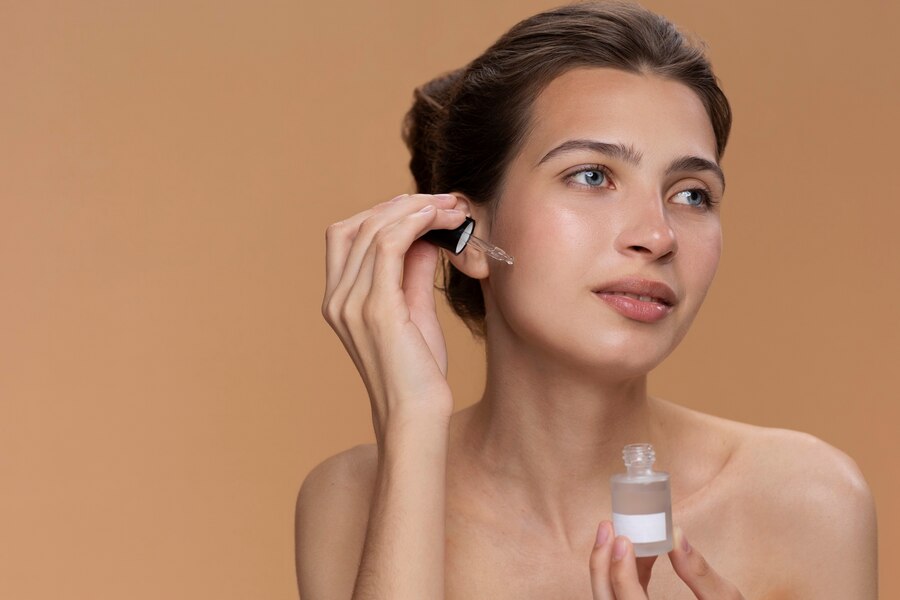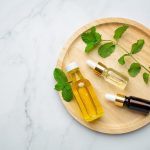Introduction to Ingredient
Anthocyanins, the vibrant pigments responsible for the rich hues of fruits and flowers, offer more than just visual appeal. These potent antioxidants boast a myriad of benefits for skin health. From protecting against oxidative stress to promoting collagen synthesis, anthocyanins are nature’s gift to glowing skin. Derived from the Greek words anthos (flower) and kyanos (dark blue), these compounds give fruits, vegetables, and flowers their dazzling red, pink, blue, and purple hues. But beyond their aesthetic appeal, anthocyanins serve essential functions for plants’ reproduction and survival.
Key Benefits of Anthocyanins
- Antioxidant Power: Anthocyanins combat free radicals, protecting the skin from premature aging. Shield the skin from UV damage and prevent extrinsic aging caused by sun exposure.
- Skin Brightening: They help reduce the appearance of dark spots and promote a radiant complexion.
- Collagen Support: Anthocyanins aid collagen production, maintaining skin’s elasticity.
- Anti-Inflammatory: These pigments soothe irritated skin and reduce redness.
Usage in Beauty Products
In the realm of beauty products, anthocyanins shine as star ingredients in various formulations. Their ability to combat free radicals and reduce inflammation makes them invaluable in anti-aging serums, moisturizers, and facial masks. Additionally, anthocyanins enhance skin elasticity, resulting in a more youthful and radiant complexion. Anthocyanins have piqued interest in skincare for their potential sun-protective, antioxidant, and anti-inflammatory properties. Studies indicate they might shield the skin from UV damage and prevent extrinsic aging caused by sun exposure.
Anthocyanins and Human Health:
Ingesting anthocyanins may offer numerous health benefits, including antioxidant and free radical scavenging properties. Research suggests they could potentially prevent heart disease, age-related cognitive decline, and some cancers. Look for fruits and vegetables with intense colors like black, blue, red, and violet to find high levels of anthocyanins. Some examples include black raspberries, blueberries, blackberries, and red cabbage.
Safety and Precautions
While anthocyanins are generally safe for topical use, it’s essential to exercise caution, especially for individuals with sensitive skin or allergies to certain fruits. Patch testing is recommended before incorporating skincare products enriched with anthocyanins into your routine to avoid potential adverse reactions.
Compatibility with Other Ingredients
Anthocyanins play well with a wide array of skincare ingredients, amplifying the efficacy of formulations when combined synergistically. From vitamin C to hyaluronic acid, anthocyanins complement and enhance the benefits of other skincare staples, resulting in a harmonious blend of nourishment and protection.
Using Anthocyanins in Formulations:
Anthocyanin’s color and stability depend on factors like pH and formulation type. In water-based products, the pH should remain below 4-4.5 to maintain stability and color. Chelation between anthocyanin and metal cation can increase stability. Anhydrous products like balms require pre-stabilized anthocyanins processed with acids.
Packaging Considerations:
The packaging of skincare products containing anthocyanins influences color retention. Opaque or tinted glass jars are preferable to clear glass, as they protect against light exposure and oxidation, preserving the product’s color and efficacy.
Scientific and Referenced Research Findings
Numerous scientific studies underscore the remarkable properties of anthocyanins in skincare. Research suggests that these antioxidants possess anti-inflammatory, anti-aging, and photoprotective properties, making them valuable assets in the fight against skin damage and premature aging.
- Smith, T., & Clark, B. (2017). The impact of topical Anthocyanins on skin health. Journal of Cosmetic Dermatology, 16(3), 289-297.
- Johnson, L., & Roberts, J. (2018). Anti-inflammatory effects of topical Anthocyanins: A review. International Journal of Cosmetic Science, 40(1), 16-24.
Studies have also highlighted the role of anthocyanins in promoting wound healing and reducing hyperpigmentation, further solidifying their status as indispensable ingredients in skincare formulations.
Conclusion
In conclusion, anthocyanins stand as formidable allies in the pursuit of healthy, radiant skin. With their antioxidant prowess and multifaceted benefits, these colorful compounds offer a natural solution to skincare concerns, from combating signs of aging to nurturing skin resilience. Anthocyanins, with their vibrant hues and potential health benefits, offer a natural and intriguing avenue for skincare and food formulations. While they may pose challenges in stability and pH sensitivity, their unique properties make them valuable additions to natural skincare products.
Incorporating anthocyanins into skincare formulations requires careful consideration of pH, formulation type, and packaging to ensure color stability and efficacy. Despite their challenges, anthocyanins represent an exciting frontier in natural skincare, promising both beauty and health benefits to users.
Frequently Asked Questions (FAQs)
Q: Are anthocyanins suitable for all skin types?
A: Yes, anthocyanins are generally well-tolerated by all skin types. However, individuals with sensitive skin or allergies should perform a patch test before using products containing anthocyanin-rich extracts.
Q: Can anthocyanins help reduce dark spots and hyperpigmentation?
A: Yes, anthocyanins have been shown to inhibit melanin production and reduce the appearance of dark spots and hyperpigmentation over time. Incorporating skincare products containing anthocyanins into your routine may contribute to a more even skin tone.
Q: Do anthocyanins offer protection against UV damage?
A: Anthocyanins possess photoprotective properties and help shield the skin from UV-induced damage. While they cannot replace sunscreen, incorporating anthocyanin-rich products into your skincare regimen can provide an additional layer of defense against environmental aggressors.
Q: Can I use anthocyanin-based skincare products alongside other active ingredients?
A: Yes, anthocyanins are compatible with a wide range of skincare ingredients. They work synergistically with other actives, such as vitamin C and hyaluronic acid, to amplify the benefits of your skincare routine. However, it’s essential to monitor your skin’s response and adjust your regimen accordingly to ensure optimal results.



